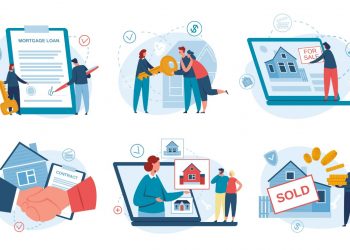RISMEDIA, November 14, 2009—Whether you’re looking for ways to dig out of your financial hole or ways to avoid getting into one, the importance of actively managing your credit and debt profile has never been greater. Americans have become well-versed in asset management but not necessarily liability management. Until recently, easy access to credit has made our current generation feel immune to the real risks that overextending yourself on credit creates.
Fortunately, as a result of our current economic environment and hopefully going forward, it is apparent that consumers are beginning to spend more time and thought on the types of credit they have and how it is used. In parallel, banks and other creditors have begun to be much more restrictive about who gets approved for new credit and which consumers get the preferred interest rates and products. The reality is that consumers need to change their behaviors and adapt to the realities of the current environment and cannot wait for the market to change.
Here are some simple first steps to consider in liability management:
STEP 1: Understand How Credit Works–Now is not the time to be content with understanding 80% of what you need to know about your credit or saying, “I’ll get to it tomorrow because I don’t have time today.” Ninety-four percent of consumers are challenged with understanding the basics of how personal credit works to assure they have the best credit and debt profile possible. In most cases they build credit over a lifetime of “trial and error.” The constantly changing credit environment creates a situation whereby everyone can use a trained professional to help keep them educated.
STEP 2: Continually Evaluate and Monitor the Health of Your Current Credit Profile–The second step is to evaluate your current credit and debt profile and establish a plan based on your short- and long-term credit needs. Continually monitoring your credit report and profile is no different or less important today than getting a physical exam by your doctor.
STEP 3: Optimize Your Credit–Each of your debts should be periodically reviewed and analyzed. Are there options you can take to improve your overall credit profile so that you’re more desirable to creditors for their “preferred” interest rates? Should you consolidate some of your debt? Once you strengthen your credit and debt profile, do you have options on your home, auto and credit cards to negotiate lower interest rates and terms that would save you money monthly?
STEP 4: Rethink New Purchases–Excellent credit is like an insurance policy. When you need to use it you want to help ensure you qualify for the preferred interest rates and terms that will give you the best payment options based on your needs and capabilities. Maintaining your credit “insurance policy” is critical for special purchases like a home, car or major appliances when needed. Don’t wait until there’s an immediate need because your chance of making a material and impactful change in your profile overnight is very difficult.
Don’t let anyone mislead you. It takes time, knowledge and planning to assure you build, optimize and manage your personal credit and debt profile so that you can help maintain the affordability of what you have and/or create a better opportunity to qualify for preferred interest rates and terms on purchases requiring additional credit. Effective liability management all starts with the four steps above. There has never been a more important time to seek the help of a professional and personal credit coach to help ensure that your credit and debt profile is optimized not only today but on a continuing basis as well.
Jeff Mandel is president and Marlin Brandt is COO of ApprovalGUARD.
For more information, visit www.ApprovalGUARD.com.










